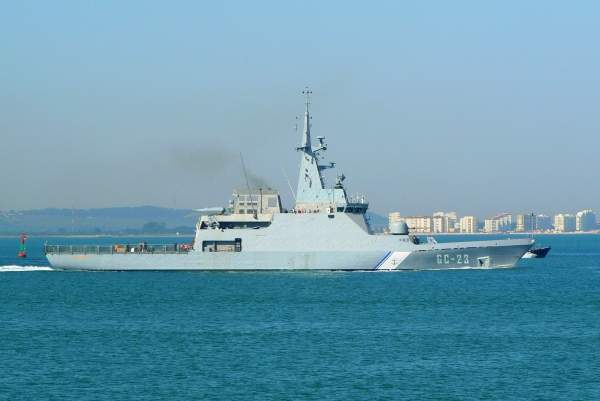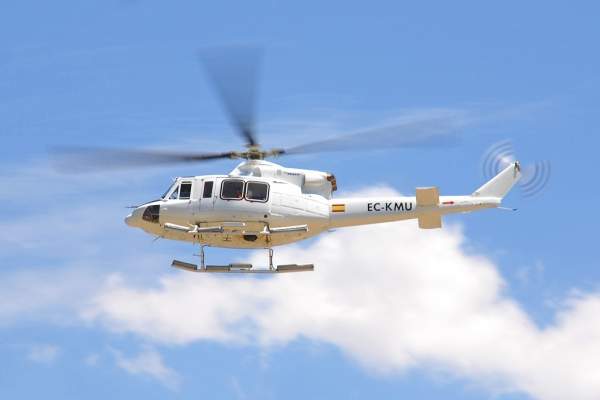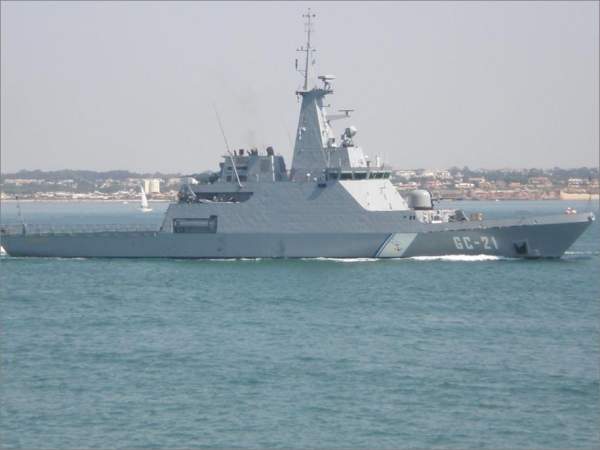Guaicamacuto Class offshore patrol vessels or BVL (Buque de Vigilancia de Litoral) are in service with the Venezuelan Navy, deployed across the Exclusive Economic Zone (EEZ) of Venezuela.
BVL type vessels can conduct a range of missions, such as surveillance and protection of coastal area, search and rescue, protection of shipping, anti-surface warfare (AsuW), passive electronic warfare, marine pollution control, early intervention, transportation of personnel and supplies and external fire fighting.
BVL class patrol vessel develoment and production
In November 2005, the Venezuelan Government and Navantia signed a contract for eight patrol boats including four BVL and four POVZEE vessels.
Under the contract, three BVLs will be built at Navantia’s San Fernando-Puerto Real shipyard and the fourth will be constructed at Diques y Astilleros Nacionales (DIANCA) in Venezuela, with technical assistance from Navantia. The deliveries were originally scheduled between March 2010 and the end of 2011.
The first steel was cut for the lead ship BVL Guaicamacuto (GC-21), in December 2006. The vessel was launched in October 2008 and delivered to the Venezuelan Navy in March 2010.
BVL Yavire (GC-22) was launched in March 2009 and delivered in November 2010. BVL Naiguatá (GC-23) was laid down in October 2008 and launched in June 2009. The ship was delivered in February 2011.
The last ship in the class, BVL Tamanaco (GC-24), is expected to be delivered to the Venezuelan Navy by the end of 2012. More than 90 international companies have cooperated in the construction and delivery of this class.
Guaicamacuto Class design and features
The 1,500t Guaicamacuto Class was designed based on the Serviola-Class patrol boats of the Spanish Navy. The vessel incorporates a mono-hull and superstructure made of steel. Other notable features include a flight deck, stern ramp for a RHIB boat and fire-fighting equipment and system.
Guaicamacuto has an overall length of 79.9m, beam of 11.1m and a draft of 7m. The full load displacement of the ship is 1,720t.
Each boat can complement 64 personnel. The class is equipped with communications intelligence (COMINT) and LINK Y datalink and identification, friend or foe (IFF) systems.
Weapon systems of the Venezuelan Navy’s vessels
The main gun fitted forward is a 76mm / 62 Oto Melara. The gun can fire at a rate of 120 rounds a minute for a maximum range of 30,000m.
The ammunition used includes armour piercing, incendiary and directed fragmentation. It protects the hostile ship from aircraft, short-range anti-ship missiles and surface threats.
Guaicamacuto has an Oerlikon Millennium 35mm close-in weapon system (CIWS) at the stern. It has a maximum rate of fire of 1,000 rounds a minute. The firing is controlled by fire-control system employing radar or electro-optical trackers.
The gun provides close-point defence against short range incoming anti-ship missiles and low flying aircraft. Two Browning M2 12.7mm guns are installed at the B position of the ship.
Sensors, radars and aircraft carrying capabilities of BVL ships
The onboard radar and associated electronic equipment include Thales air and surface search radar operating at G and H bands, Thales STING EO lightweight dual band weapon control system operating at I and K bands and Thales MIRADOR electro-optical multisensor.
The vessel has a stern helicopter deck to support the operations of a medium sized helicopter.
The landing spot can accommodate AB212, AB412 and Eurocopter AS565 Panther helicopters. The ship lacks a hangar facility for the embarked helicopter.
Propulsion of the OPVs
Guaicamacuto Class is powered by combined diesel and diesel (CODAD) propulsion system integrating two MTU 12V 1163 TB93 diesel engines, two gearboxes, two shafts and two variable pitch propellers.
Each engine delivers a maximum power output of 4,440kW. The propulsion system provides a maximum speed of 20kt and a range of 4,000nm at 16kt.
The Global Naval Surface Combatants and Warfare Systems Market 2011-2021
This project forms part of our recent analysis and forecasts of the global naval surface combatants and warfare systems market available from our business information platform Strategic Defence Intelligence. For more information click here or contact us: EMEA: +44 20 7936 6783; Americas: +1 415 439 4914; Asia Pacific: +61 2 9947 9709 or via email.







